Overview
The SalesPad Vendor Card allows users to access detailed vendor information including existing purchase orders, contact information and item history. Users can also create new POs from the Vendor Card (refer to the Creating/Opening Purchase Orders document).
Proper configuration is required; refer to the Configuring SalesPad for Purchasing document for more information.
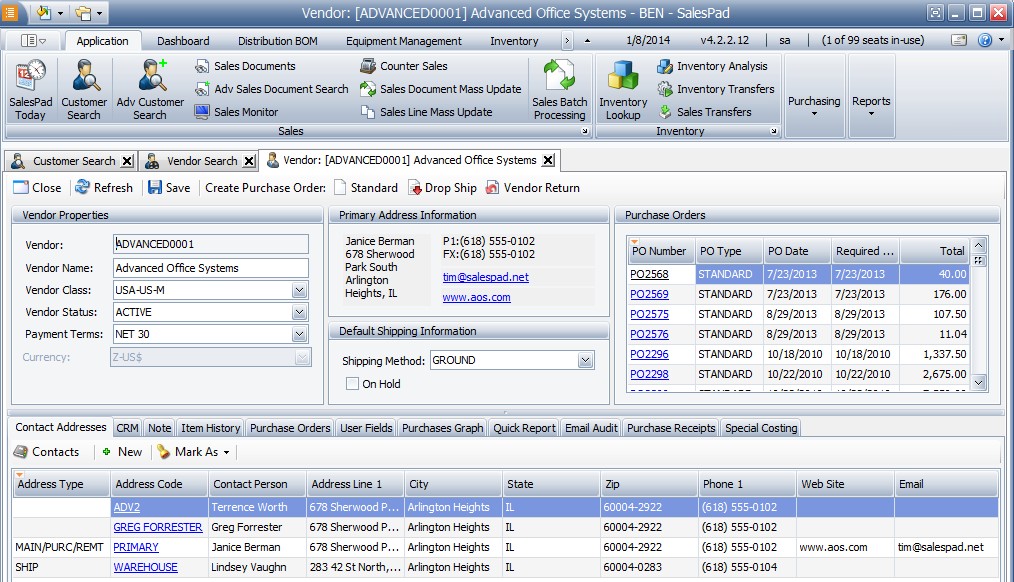
Access/add individual Vendor Cards via Modules > Purchasing > Vendor Search. Refer to the VendorSearch document for detailed instructions.
Header
You can create a new PO from the Create Purchase Order options (Standard or Dropship) in the header. You can also Refresh or Save any changes, or Close the Vendor Card, from the Vendor Card header.
Top
The Vendor Properties section displays information such as vendor name and ID, class, status, and payment terms. You can select a default shipping method for the vendor in the Default Shipping Information section. Primary Address Information and a list of existing POs also appear on the top of the Vendor Card.
Note: If the Show Vendor Hint sub-setting under Vendor Overview is enabled in Modules > Security, a Purchasing Summary hint with purchase order totals will display over the Name field when users hover over the Vendor field on the Vendor Card.

Tabs
CONTACT ADDRESSES
The Contact Addresses tab displays all contacts related to the vendor:

Select a contact and make a selection from the Mark As dropdown to set an address code for a contact:
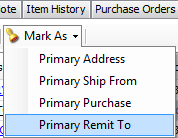
Click New to add a contact, or click an Address Code to modify existing contact information:
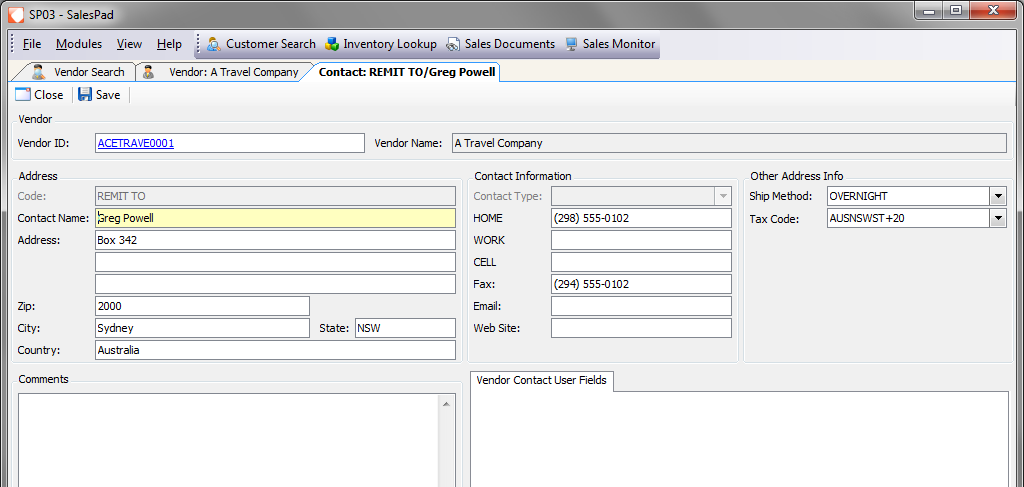
When finished, click Save to save the changes and return to the Vendor Card.
CRM
The CRM tab lists any notes added to the Vendor Card along with the date/time of creation, and the user name. With proper security, users can delete CRM notes by clicking the Delete button.
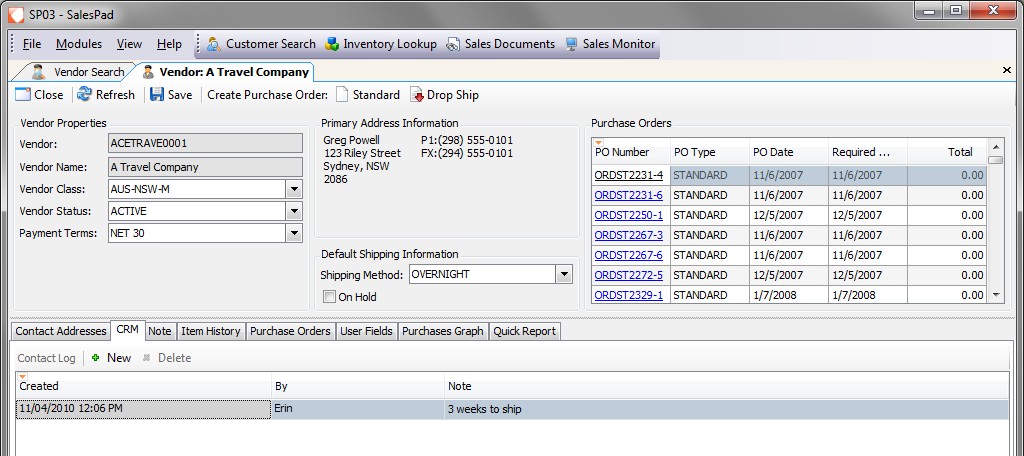
Click New to create a new CRM note, and then OK to return to the Vendor Card:
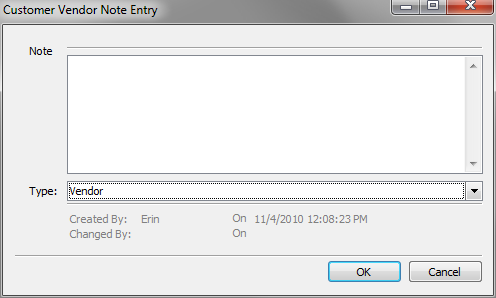
CRM items will be inserted into the SalesPad Today modules as Task items.
Note: Values in the Type dropdown are created in the Note Type List setting under Vendor Notes in Modules > Settings.
NOTE
Enter notes and comments for the vendor on the Notes tab:

ITEM HISTORY
The Item History tab displays a complete history of all items purchased from the vendor. You can filter the display by number of months and click Refresh to view only items purchased during the selected time frame.
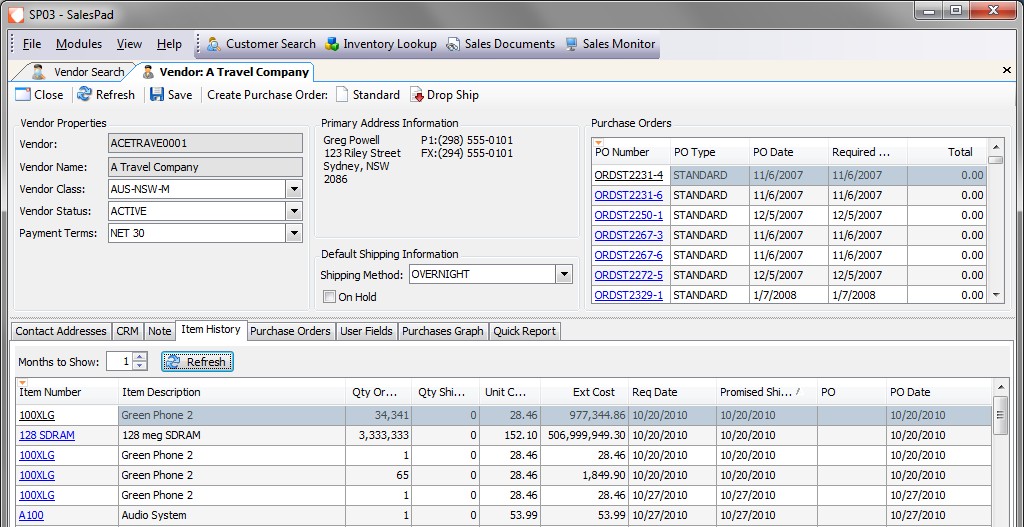
PURCHASE ORDERS
The Purchase Orders tab displays a list of POs linked to the vendor. Unlike the Purchase Orders listing on the top of the Vendor Card, you can filter the display by number of months, or order type. Make selections and click Refresh to view only POs that meet the selected criteria.
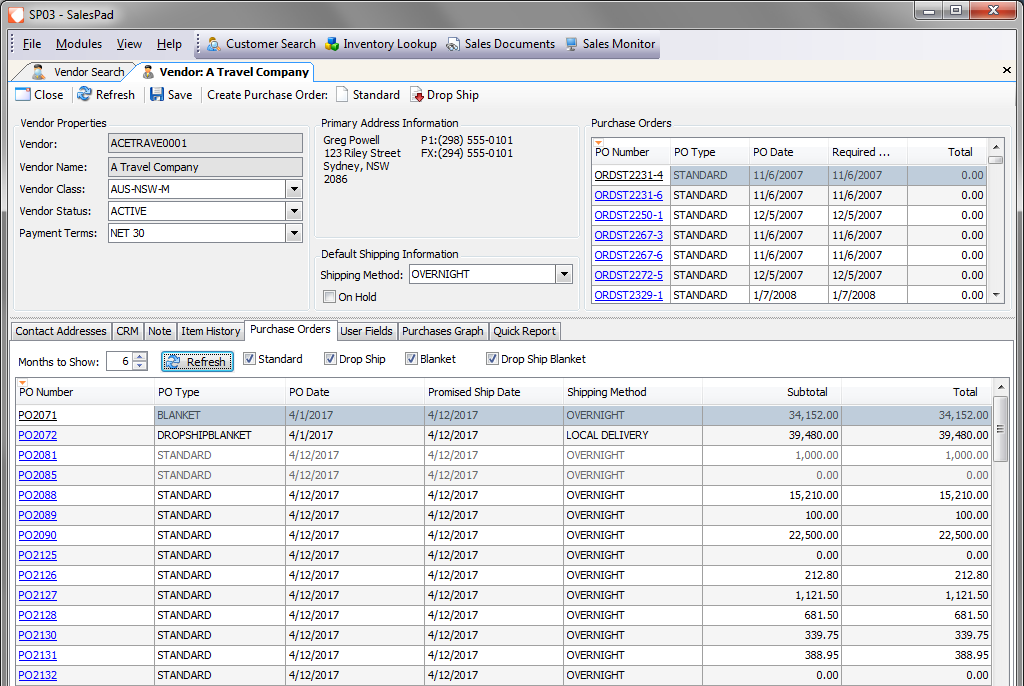
USER FIELDS
The User Fields tab displays all user defined fields created on the Vendor Business Object. Refer to the SalesPad User Defined Fields document for more information.
Note: In versions 4.0 and later, Vendor UDFs will automatically copy to the same Purchase Order UDF.

PURCHASES GRAPH
The Purchases Graph tab displays a graphical look at purchases from the vendor for a user specified time period. Grand Totals appear on the right. You can break the graph by day, week, quarter, month, or year, and display plot price, cost, freight, or GM Pct. Make selections and click Refresh to update the graph. The graph can also be printed or exported.

Purchases Graph Price Calculation:
To calculate prices, the Purchases Graph uses a stored procedure that looks at vendor invoices and credit memos. It treats the amount (price) on the vendor invoice as a positive amount, and the credit memos as a negative amount. If the total credit memo amount for a time period is greater than the total vendor invoice amount, then the Purchases Graph will display a negative price.
QUICK REPORT
If a Vendor Quick Report is specified in Modules > Security Editor, it will display in the Quick Reports tab and any Quick Reports added to the Vendor Card. Refer to SalesPad documentation on Quick Reports and SalesPad Security Settings guide for more information.
Note: When Quick Reports have been added, the name of the tab changes from Quick Report to the title of the Quick Report (single) or Vendor Quick Reports (multiple).
EMAIL AUDIT
The Email Audit tab displays emails relevant to the vendor, shown by date, PO number, user ID, email From and To, Email Subject, and Email Body.
SPECIAL COSTING
In versions 4.0+, there is a Special Costing tab that displays existing special costing and, with proper security, allows users to add new special costing and change cost levels. Refer to the Vendor Special Costing document for more information.

SalesPad Support
Comments